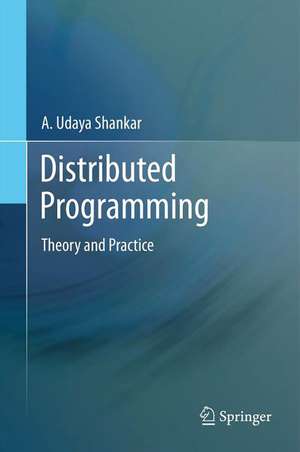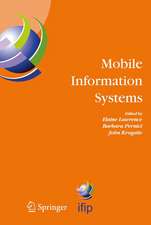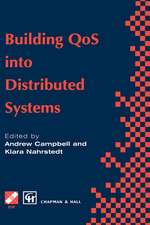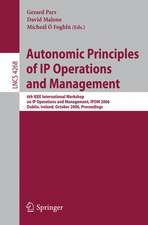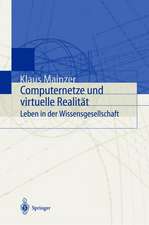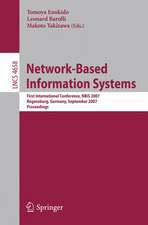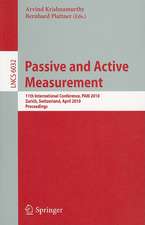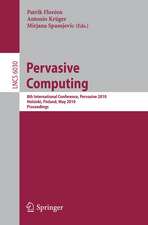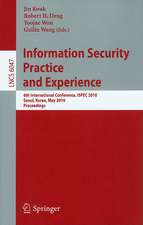Distributed Programming: Theory and Practice
Autor A. Udaya Shankaren Limba Engleză Hardback – 15 sep 2012
Distributed Programming: Theory and Practice bridges the gap between books that focus on specific concurrent programming languages and books that focus on distributed algorithms. Programs are written in a "real-life" programming notation, along the lines of Java and Python with explicit instantiation of threads and programs. Students and programmers will see these as programs and not "merely" algorithms in pseudo-code. The programs implement interesting algorithms and solve problems that are large enough to serve as projects in programming classes and software engineering classes. Exercises and examples are included at the end of each chapter with on-line access to the solutions.
Distributed Programming: Theory and Practice is designed as an advanced-level text book for students in computer science and electrical engineering. Programmers, software engineers and researchers working in this field will also find this book useful.
| Toate formatele și edițiile | Preț | Express |
|---|---|---|
| Paperback (1) | 337.66 lei 6-8 săpt. | |
| Springer – 15 oct 2014 | 337.66 lei 6-8 săpt. | |
| Hardback (1) | 344.10 lei 6-8 săpt. | |
| Springer – 15 sep 2012 | 344.10 lei 6-8 săpt. |
Preț: 344.10 lei
Preț vechi: 430.12 lei
-20% Nou
Puncte Express: 516
Preț estimativ în valută:
65.85€ • 71.50$ • 55.32£
65.85€ • 71.50$ • 55.32£
Carte tipărită la comandă
Livrare economică 22 aprilie-06 mai
Preluare comenzi: 021 569.72.76
Specificații
ISBN-13: 9781461448808
ISBN-10: 1461448808
Pagini: 395
Ilustrații: XVIII, 386 p.
Dimensiuni: 155 x 235 x 30 mm
Greutate: 0.74 kg
Ediția:2013
Editura: Springer
Colecția Springer
Locul publicării:New York, NY, United States
ISBN-10: 1461448808
Pagini: 395
Ilustrații: XVIII, 386 p.
Dimensiuni: 155 x 235 x 30 mm
Greutate: 0.74 kg
Ediția:2013
Editura: Springer
Colecția Springer
Locul publicării:New York, NY, United States
Public țintă
GraduateCuprins
Introduction.- Simple Lock.- Bounded Buffer.- Message-Passing Services.- Fifo Channels from Unreliable Channels.- Programs, Semantics and Effective Atomicity.- Implements and Compositionality.- SESF for Time-Constrained Programs.- Lock using Peterson's Algorithm.- Lock using the Bakery Algorithm.- Distributed Lock Service.- Distributed Lock using Timestamps.- Channel with Termination Detection Service.- Termination Detection for Diffusing Computations.- Object-Transfer Service.- Object Transfer using Path Reversal.- Distributed Shared Memory Service.- A Single-Copy Distributed Shared Memory.- A Multi-Copy Distributed Shared Memory.- Reliable Transport Service.- Reliable Transport Protocol.
Recenzii
From the reviews:
“This book is about how to write software for distributed systems while ensuring correctness. … This book intends to come out with a practical methodology for writing correct parallel programs. … The text covers most of the classic parallel programming topics like lock, message passing, bounded buffers, etc. It is addressed to researchers and students in parallel computing and can also be used by software professionals as a hands on writing correct parallel software.” (Corneliu Bârsan, zbMATH, Vol. 1276, 2014)
“As a textbook, it presents a thorough introduction to distributed programming in a language-agnostic framework based on assertional reasoning and supported by temporal logic. … As a reference book, Distributed Programming provides a set of fundamental concepts and their applications in a compact, straightforward format. The formalism introduced in the book is easy to grasp and provides a good template for language independence … . Summing Up: Recommended. Upper-division undergraduates, graduate students, researchers/faculty, and professionals.” (L. Benedicenti, Choice, Vol. 51 (1), September, 2013)
“This book is about how to write software for distributed systems while ensuring correctness. … This book intends to come out with a practical methodology for writing correct parallel programs. … The text covers most of the classic parallel programming topics like lock, message passing, bounded buffers, etc. It is addressed to researchers and students in parallel computing and can also be used by software professionals as a hands on writing correct parallel software.” (Corneliu Bârsan, zbMATH, Vol. 1276, 2014)
“As a textbook, it presents a thorough introduction to distributed programming in a language-agnostic framework based on assertional reasoning and supported by temporal logic. … As a reference book, Distributed Programming provides a set of fundamental concepts and their applications in a compact, straightforward format. The formalism introduced in the book is easy to grasp and provides a good template for language independence … . Summing Up: Recommended. Upper-division undergraduates, graduate students, researchers/faculty, and professionals.” (L. Benedicenti, Choice, Vol. 51 (1), September, 2013)
Caracteristici
Bridges the gap between books that focus on specific concurrent programming languages and books that focus on distributed algorithms Programs are written in a “real-life” programming notation along the lines of Java and Python Exercises Examples are included in each chapter with on-line access to the solutions Includes supplementary material: sn.pub/extras
